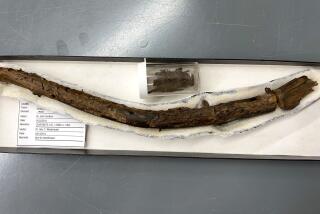Sunflowers
- Share via
Large clusters of sunflowers with their bright yellow, daisy-like blooms can be seen along Southern California roadsides throughout the year.
There are many varieties of this leafy perennial, introduced to the western United States from the plains states, where it grows abundantly in fields and prairies from Minnesota to Texas.
Pictured here are sunflowers growing along Chatsworth Street near Tampa Avenue.
The common sunflower ( Helianthus annuus ), the state flower of Kansas, is the most familiar species in California. Several types of sunflowers resemble the common sunflower and it is difficult tell them apart. Often, the only difference is the shape of their leaves.
Sunflowers range from a few inches to several feet tall and have oval to heart-shaped leaves. The flower head, which turns to follow the path of the sun, is formed by several petals surrounding a flat, brownish disk. The head grows alone at the end of a hairy, branching stem and ranges from a few inches to more than a foot wide.
Pollinating insects are attracted to sunflowers. Harvester ants collect the flower’s seeds and carry them to their nests, then husk and store them for food.
When cultivated, the larger seeds produced can be roasted and eaten as nuts. The seeds can also be processed into chicken feed or turned into oil, which is used in salad oil, margarine and candy.






